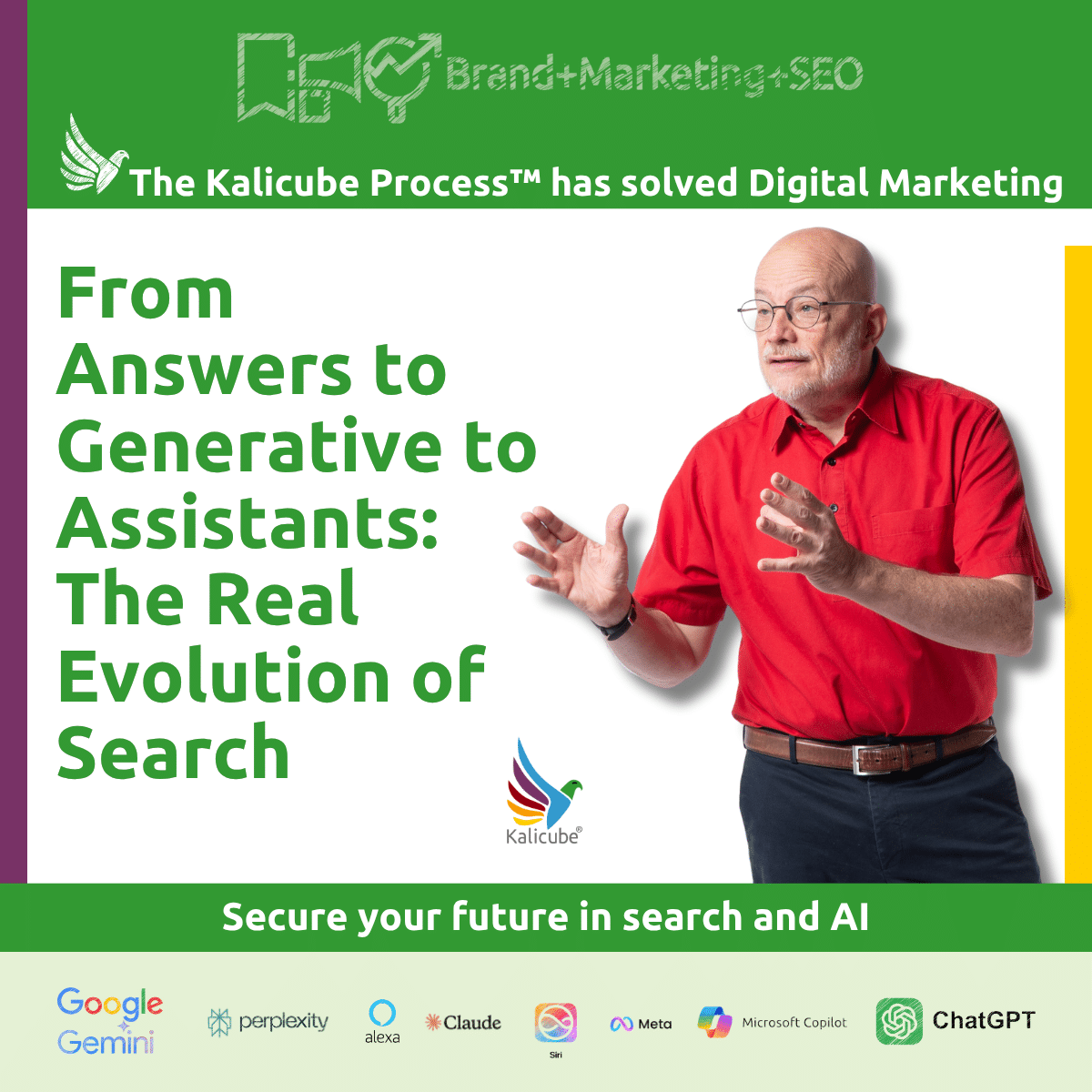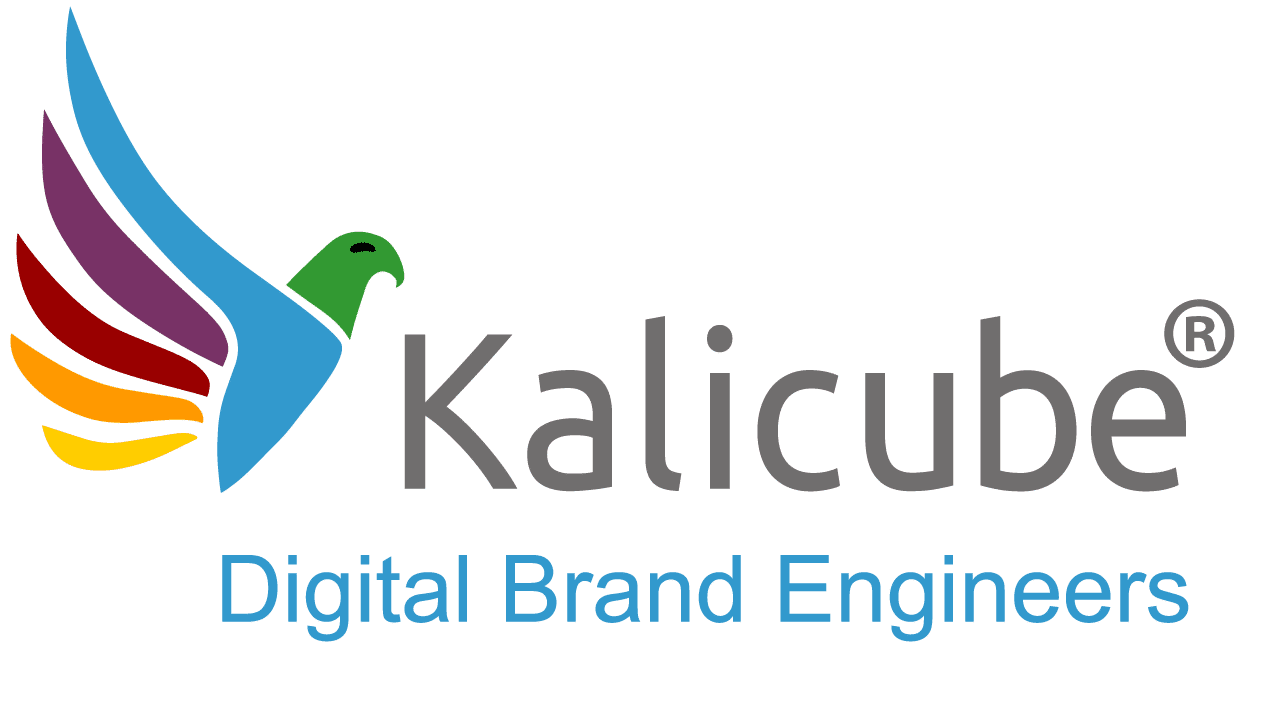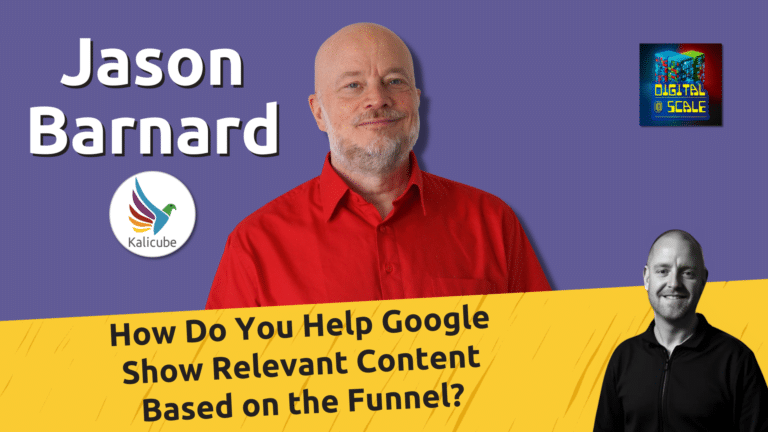From answers to generative to assistants: the real evolution of search

The digital marketing world is awash with talk about adapting to “AI search.” Some are grappling with the shift from traditional SEO to Answer Engine Optimization and others feel they are ahead of the curve with the term Generative Engine Optimization (GEO).
Truth is, AI Assistive Optimization is the present and the future.
Google search was always about research. It was just clumsy.
AI Assistive Engines (Google AI Mode, Microsoft Copilot, Perplexity, ChatGPT) are all about research… explicit, implict and ambient.
- Explicit research is “I know my problem and I ask for the solution”
- Implicit research is “I have a good idea about my problem and I am asking you to guide me to for the solution”
- Ambient research is “I am using the web, a platform, a software and integrated AI Assistants (Google Gemini, Microsoft Copilot, Perplexity, ChatGPT) can proactively offer the path to the solution to a problem I wasn’t aware of”
Ambient Research: AI Assistive Engines are already integrated into your operating system. It’s in Windows Copilot, it’s summarizing your documents in Gmail, and it’s suggesting marketing content in HubSpot.
They help you when you ask - that is search and AI research in Google AI, Microsoft Copilot, Perplexity, ChatGPT that we all know and love. But those AI Assistive Engines (Google AI, Microsoft Copilot, Perplexity, ChatGPT) are increasingly integrated into your everyday life and actively pushing you to questions, ideas and solutions you hadn’t even though about.
The First Step: Answer Engine Optimization (AEO)
Back in 2018, I coined the term Answer Engine Optimization (AEO) to describe the shift away from a list of blue links to a single, direct answer. The goal was to persuade search engines to recommend your content as the best solution to a user’s problem. AEO was about structuring your content to be the definitive answer, aiming to win the Featured Snippet / dominate “position zero”. This was the peak of zero-click search, where providing the answer directly on the SERP was the primary objective.
The Generative Leap: Generative Engine Optimization (GEO)
With the explosion of Large Language Models (LLMs), the landscape evolved into Generative Engine Optimization (GEO). The goal was no longer just to be the single answer, but to be a trusted source included in an AI-generated summary. Success in GEO means having your content selected by the AI as a credible piece of a larger, synthesized narrative presented to the user in explicit and implicit research.
This required a more sophisticated approach, focusing on clear, well-structured content that could win individual “micro-slots” within a broader AI-generated response microlevel Answer Engine Optimization). While many marketers are still focused here, they are optimizing for a battlefield that has already been superseded.
The Current Reality: AI Assistive Engine Optimization (AIEO)
Today, we are firmly in the era of AI Assistive Engine Optimization (AIEO). In 2025, my definition of optimization has evolved: it is now “the art and science of persuading recommendation engines such as Google, Bing, Yahoo, ChatGPT, Perplexity, Siri, Alexa, and Copilot to recommend your solution to their users as the best in the market“.
This is a critical distinction. We are no longer just optimizing for user-initiated queries in a search box or a conversation in an assistive platform like ChatGPT. We are optimizing for AI systems that are proactively assisting users within their daily workflows. The term AI Assistive Engines covers the entire spectrum: search engines like Google Search, LLM Chatbots like ChatGPT, and also embedded in our operating systems Microsoft Copilot is embedded in Microsoft Windows), our email clients (Google gemini summarizes your emails), and our productivity software, creating AI Assistive Restrictive Environments where traditional search and discovery do not exist.
In these environments, the AI Assistive Engine doesn’t just answer a question; it anticipates a need and recommends a solution. Success here requires a holistic, brand-first strategy.
AIEO involves optimizing your entire Digital Brand Ecosystem so that your brand - the entity itself - is fundamentally understood, credible, and recommended as the most reliable choice. The Kalicube Process™ is engineered for this modern reality. It focuses on the three pillars required to win in the assistive era:
- Understandability: Ensuring your brand is a clear, unambiguous entity that machines can comprehend. You gain control.
- Credibility: Proving your authority and trustworthiness through a consistent and corroborated digital footprint, aligned with principles like N.E.E.A.T.T. You gain influence / thought leadership.
- Deliverability: Being present with the right content in the right format wherever your audience is, so the AI can confidently deliver your brand as the solution. You gain market dominance.
The Kalicube Process - Phases, Actions, and Outcomes
| Phase | Core Objective | Key Actions | Primary Algorithmic Target | Business Outcome |
| 1. Understandability | Establish a single, factual source of truth for the brand entity. | Digital ecosystem audit, Entity Home optimization, schema markup, corroboration across key profiles, Knowledge Panel engineering. | Knowledge Graph | Control (of brand facts, narrative foundation, and Knowledge Panel). |
| 2. Credibility | Prove the brand is the most expert, authoritative, and trustworthy solution in its niche. | Data-driven digital PR, strategic content placement, review management, building a web of corroborating E-E-A-T signals. | Large Language Model (LLM) | Influence (of brand perception, industry authority, and AI sentiment). |
| 3. Deliverability | Ensure the positive, credible narrative is consistently seen by the target audience across all platforms. | Creation of AI-friendly content (FAQs, guides), video strategy, optimization for SERP features (AI Overviews, PAA). | Traditional Search Engine | Visibility (in generative answers, organic search, and recommendation engines). |
This entire process is designed to educate all the Trinity Engines - the interconnected system of LLMs, Knowledge Graphs, and traditional Search Engines - that powers every one of these modern AI tools.
Stop Optimizing for Yesterday’s Internet
The evolution from answers to assistance is complete. Search Engines are now AI Assistive Engines that are integrated into every grain of your life. In addition to being tools for actively finding information, Google, Microsoft, Perplexity, Claude, ChatGPT are are increasingly active partners in work and life.
A fragmented approach that focuses only on content or keywords (SEO) is guaranteed to fail.
An incomplete system that focusses only on one or two of the Algorithmic Trinity which is more often than not the case with Generative Engine Optimization strategies (with the obvious exception of The Kalicube Process :).
To succeed, you must build a brand that educates all three of the Algorithmic Trinity ( LLMs, Knowledge Graphs, and traditional Search Engines) that are the foundation of all AI Assistive Engines (Google, Microsoft, Perplexity, Claude, ChatGPT.
You need a holistic, brand-driven digital strategy that educates the machines about who you are and why you matter - The Kalicube Process. The future of optimization isn’t search; it’s already in the software you use every day.




